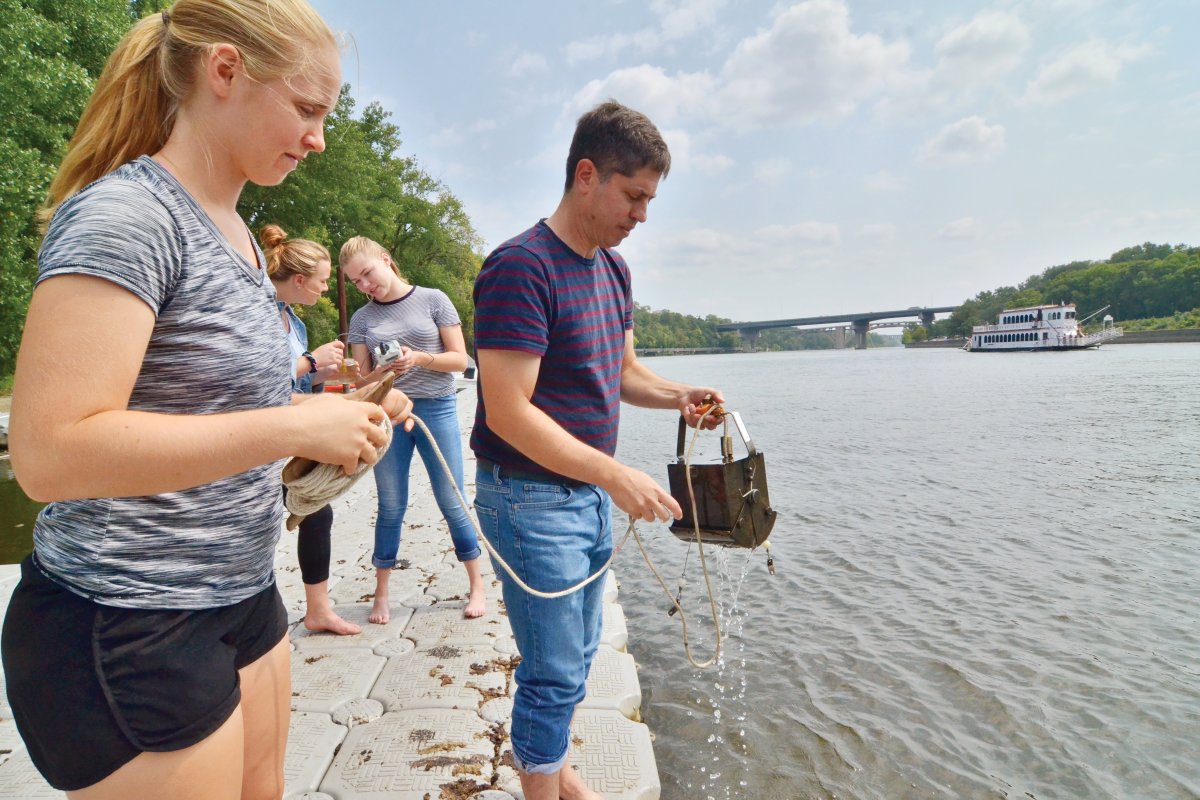Lurking hazards of a germ killer

Above: Minnesota was the first state to ban the germ-killing chemical triclosan from soaps and bodywash after Arnold's two-year water pollution study.
CSE professor uncovers the environmental downside of an active ingredient found in soaps, body wash, and other products
November 9, 2018
Triclosan, an antimicrobial agent used in consumer products, sounds harmless enough. It kills germs, after all. And it has been used in soaps, cleaning supplies, and even toothpaste and mouthwash for 40 years without obvious health effects.
But Bill Arnold, Distinguished McKnight University Professor and the Joseph T. and Rose S. Ling Professor in Environmental Engineering, found that triclosan has been building up in the sediments of Minnesota lakes for decades. Worse, it breaks down to potentially more harmful chemicals.
“What we clearly showed is that the source of these compounds in the environment was triclosan,” he said.
“So, we are washing our hands with a compound to kill bacteria,” added Arnold, “and it was leading to compounds that are of a class that are known to be toxic.”
First formulated in the 1960s, triclosan found its way into many everyday goods in the 1980s as shoppers sought out germ-killing personal products. The chemical first came to Arnold’s attention in 2001, when he was a newly minted assistant professor interested in chemical reactions driven by light that could break down human-made compounds. Triclosan seemed particularly interesting because it was both reactive and common.
Minnesota leads the way
Triclosan has an easy route to waterways— down the sink, through the sewer, to a sewage treatment plant, and into a river or lake. As wastewater is treated with chlorine, Arnold discovered, several potentially toxic derivatives are formed. In sunlight, these compounds form four different kinds of dioxins, a class of toxic chemicals that bind to fatty tissues and are responsible for fish consumption advisories.
The triclosan that doesn’t break down binds to suspended particles and sinks into the sediment of lakes and rivers. With funds from the National Science Foundation and the Minnesota Environment and Natural Resources Trust Fund, Arnold and colleagues examined and dated sediment layers from lakes around the state and found triclosan in every one except a small isolated lake in Superior National Forest.
“There was nothing before 1965 because triclosan wasn’t invented yet,” Arnold explained. “And then throughout the ’80s and ’90s, levels of triclosan increased dramatically as it got incorporated into more and more consumer products.”
The scientists presented the findings to the Legislature.
“Pretty quickly Governor [Mark] Dayton put out an executive order that banned state agencies from buying triclosan-containing products,” Arnold said.
“The rationale was essentially that here’s a chemical that isn’t necessarily needed to make these products function as they should,” Arnold said. “Washing with soap and water is fine.”
Striking the right balance
The Minnesota legislative ban followed in early 2017. And soon after, the federal Food and Drug Administration ruled that companies wouldn’t be able to continue to use triclosan in many products without further review.
Meanwhile, Arnold and colleague Timothy LaPara, a professor in the Department of Civil, Environmental, and Geo- Engineering, are looking at antibiotics as well as other common cleaning agents and their derivatives in the environment.
“It’s a huge challenge, because there are new compounds constantly coming to market,” Arnold said.
While companies test the safety of the compounds themselves, relatively little attention has been given to the so-called reaction products as compounds break down. The conundrum, he noted, is finding a balance between new chemistry and expensive and time-consuming testing.
“I don’t know that there’s a single solution that’s optimal for both the environment and for business,” he said. “There are millions of compounds that we can produce that might have use, but we need a balance between what’s useful and what’s sustainable.”
Story by Greg Breining
If you’d like to support faculty research, visit our CSE giving page.
